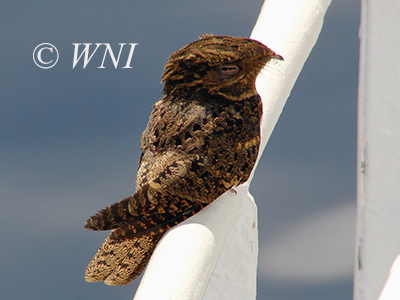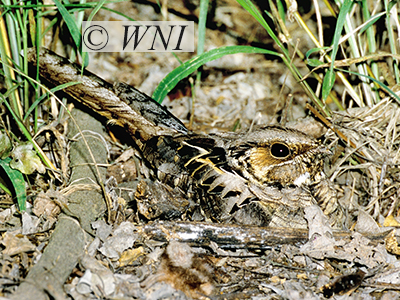| Nightjars (Caprimulgidae) |
The Caprimulgidae (9-20 genera and 77-100 species) are nearly cosmopolitan, but absent from the polar regions, New Zealand, and some other islands. They are found in a wide range of habitats, including grasslands, savannas, deserts, and forests; 0-4,000 m asl. Species nesting in high latitudes are migratory. These are medium-sized nocturnal or crepuscular birds with large head and eyes, very short bills, large gape, long pointed wings, and short legs. The typical nightjars have rictal bristles, lacking in the nighthawks. Plumage is soft and cryptically coloured in shades of brown, gray, buff, or rufous, often with streaks or spots. Most species are monogamous. The nest is on a ground, in a scrape or hollow; several species lay eggs in depressions in tree branches. The clutch contains 1-2 eggs, patterned or unmarked. Incubation lasts 17-20 days. The young are semi-precocious. Caprimulgids feed on flying insects, includes beetles, moths, orthopterans, dipterans, winged termites and ants.
 |
Chuck-will's-widow (Caprimulgus carolinensis) |
|
 |
Common Pauraque (Nyctidromus albicollis) |
|
| Unauthorized use of our images is NOT permitted. | ||
| Hotlinking or "pinning" of our images to websites is STRICTLY PROHIBITED. | ||
| Copyright © Michael Patrikeev - All Rights Reserved | ||
| |
||





